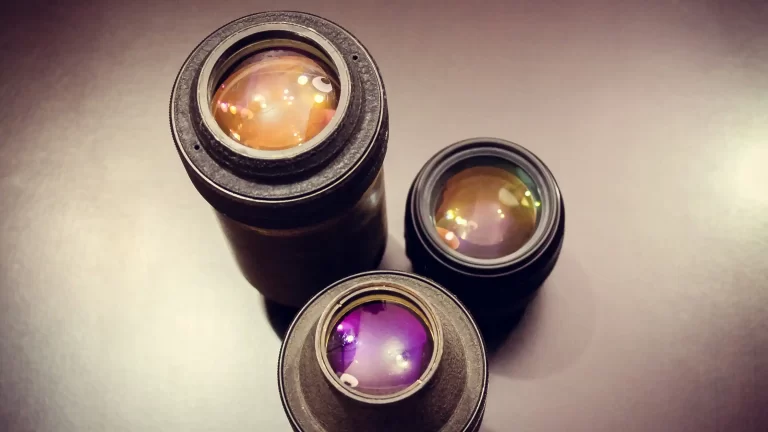Broadband AR Coatings for the Visible, NIR, and IR
When it comes to optics, clarity and precision are king. Optical technology is an integral part of our daily lives, from making it easier to take breathtaking pictures to facilitating cutting-edge scientific research. Broadband Anti-Reflective (AR) coatings are a game-changer in this area; they work wonders in the visible, near-infrared (NIR), and infrared (IR) light levels. Broadband augmented reality coatings are an intriguing topic, and this article will delve into their relevance across these three spectrums.
The Spectrum Unveiled: Visible, NIR, and IR
Before diving into the wonders of Broadband AR coatings, let’s understand the fundamental divisions of the electromagnetic spectrum:
- Visible Spectrum: This is the range of wavelengths that the human eye can perceive, spanning from approximately 400 nanometers (nm) to 700 nm. It includes the vibrant colors of our everyday world.
- Near-Infrared (NIR) Range: Beyond the visible spectrum lies NIR, with wavelengths extending from 700 nm to around 1400 nm. NIR light is invisible to the naked eye but finds applications in fields like remote sensing, agriculture, and medical diagnostics.
- Infrared (IR) Range: IR extends further into the electromagnetic spectrum, starting at approximately 1400 nm and extending beyond what is visible to humans. IR light has diverse applications, from thermal imaging in night vision to communication and security.
Broadband AR Coatings: Extending the Benefits
Traditionally, AR coatings were optimized for the visible spectrum to reduce reflections and enhance light transmission. However, the demand for optical systems capable of performing across a broader spectral range has driven the development of Broadband AR coatings. These coatings are engineered to deliver the same benefits of reduced reflection and enhanced light transmission not only in the visible range but also in NIR and IR regions.
The Significance of Broadband AR Coatings
- Improved Sensitivity: In scientific and medical imaging applications that rely on NIR and IR wavelengths, even minor reflections can disrupt data accuracy. Broadband AR coatings enhance sensitivity by minimizing these reflections, resulting in clearer and more precise images.
- Multi-Spectral Capabilities: With the ability to function seamlessly across multiple spectral ranges, Broadband AR coatings are instrumental in multi-spectral imaging systems. They enable comprehensive data collection and analysis, essential in fields such as astronomy, remote sensing, and environmental monitoring.
- Reduced Stray Light: In applications like thermal imaging or surveillance, stray light can degrade image quality. Broadband AR coatings effectively eliminate glare and unwanted reflections, ensuring more accurate and reliable results.
- Versatile Applications: Broadband AR coatings are indispensable in diverse sectors, including military and defense technology, healthcare, astronomy, and telecommunications, where they optimize the performance of optical devices and systems.
The Complexity of Design
Designing Broadband AR coatings is a complex endeavor. Engineers must consider material selection, layer thickness, and coating processes carefully to ensure consistent and reliable performance across the desired spectral range. Precision is crucial, as even minor deviations in coating design can have a significant impact on overall functionality.
Conclusion: A Bright Future for Optics
Broadband AR coatings for the visible, NIR, and IR ranges represent a remarkable advancement in optical engineering. Their ability to enhance sensitivity, reduce glare, and enable multi-spectral imaging is reshaping the landscape of optical technology.
As our understanding of materials and coating techniques continues to evolve, we can anticipate even more groundbreaking innovations that will unlock the full potential of optical systems across these diverse spectral domains. Broadband AR coatings are not just a step forward; they are a giant leap toward a future where optical clarity knows no boundaries.
Important FAQs:
Q1: What are broadband AR coatings?
A: Broadband AR coatings are optical coatings designed to reduce reflections across a wide range of wavelengths, including visible, near-infrared (NIR), and infrared (IR) spectra.
Q2: How do broadband AR coatings work?
A: Broadband AR coatings utilize thin film interference to minimize reflections by creating destructive interference for a broad range of wavelengths.
Q3: What are the benefits of broadband AR coatings?
A: Broadband AR coatings improve optical transmission, increase contrast, and enhance the overall performance of optical systems by reducing unwanted reflections across multiple spectral regions.
Q4: What applications are broadband AR coatings suitable for?
A: Broadband AR coatings are used in various optical devices and systems, including cameras, telescopes, laser systems, and optical instruments, where high transmission and minimal reflections are critical.
Q5: Can broadband AR coatings be customized for specific wavelength ranges?
A: Yes, broadband AR coatings can be tailored to optimize performance for specific wavelength bands within the visible, NIR, and IR spectra, depending on the application requirements.
Q6: Are there different types of broadband AR coatings?
A: Yes, there are different formulations and designs of broadband AR coatings optimized for specific spectral regions or applications, such as dual-band or triple-band coatings.
Q7: How do broadband AR coatings contribute to the efficiency of optical systems?
A: By minimizing reflections, broadband AR coatings maximize the amount of light transmitted through optical components, improving system efficiency, and enhancing image quality.
Q8: What factors should be considered when selecting broadband AR coatings?
A: Factors to consider include spectral performance, durability, environmental stability, and compatibility with other optical components in the system.
Thank you for exploring our blog on broadband AR coatings for the visible, NIR, and IR spectra. We hope you found the information informative and helpful. If you have any further questions or topics you’d like us to cover, please feel free to reach out. Stay tuned for more insightful content!








